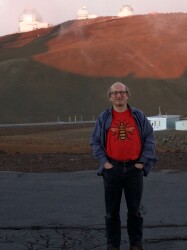BibTex format
@article{Wilson:2017:1538-4357/aa8cc7,
author = {Wilson, D and Cooray, A and Nayyeri, H and Bonato, M and Bradford, CM and Clements, DL and De, Zotti G and Diaz-Santos, T and Farrah, D and Magdis, G and Michalowski, MJ and Pearson, C and Rigopoulou, D and Valtchanov, I and Wang, L and Wardlow, J},
doi = {1538-4357/aa8cc7},
journal = {Astrophysical Journal},
title = {Stacked average far-infrared spectrum of dusty star-forming galaxies from the Herschel/SPIRE Fourier Transform Spectrometer},
url = {http://dx.doi.org/10.3847/1538-4357/aa8cc7},
volume = {848},
year = {2017}
}

